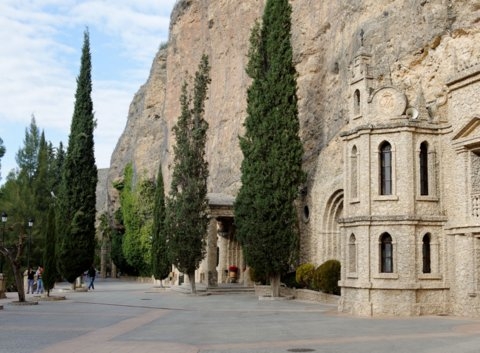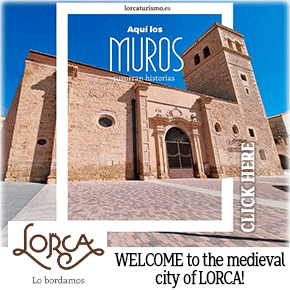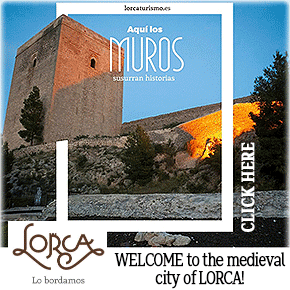article_detail
Santuario Virgen de la Esperanza, Calasparra
Sanctuary of the Virgen de la Esperanza, Calasparra
One of the most beautiful sanctuaries in the Region of Murcia is that of the Virgen de la Esperanza in Calasparra.
This little sanctuary is cut into the rock face of a sheer cliff overlooking the River Segura, set in tranquil gardens, and although it is still a place of reflection and peace ti is also justifiably one of the most visited centres of pilgrimage in the region, and the perfect partner to tie in with a visit to the nearby holy city of Caravaca de la Cruz.
Calasparra is the perfect base from which to explore this part of north-western Murcia or for those partaking in religious tourism visits, and at the same time is an interesting and enjoyable trip out for those who just want to walk in tranquil gardens in a spiritual place.
There is also a 5km senderismo walking route connecting the sanctuary to Calasparra for the more energetic!
Origins
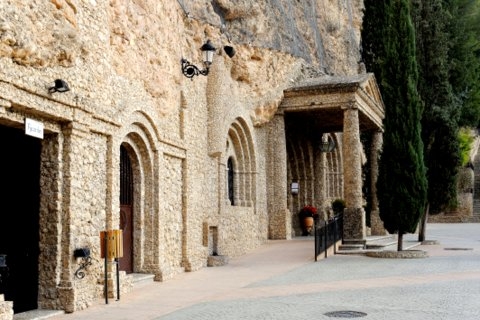
The sanctuary is mostly inside a natural cave, carved out by the waters of the River Segura when the levels of water were considerably higher. Natural caves of this nature always attracted early human inhabitants and those seeking shelter, and the story of this cave goes back to the 16th century, when a shepherd discovered the image of the Virgen de la Esperanza "La Pequeñica" or little one inside.
The explanation offered for this find is that it was probably left behind by a Christian knight who sought shelter in the cave, although in this era items such as La Pequeñica were the property of only the very rich and as such would have been revered and cared for. Exactly how this statue ended up in the cave remains a mystery.
The shepherd went straight to the authorities in Calasparra and reported his discovery, so the people of the town came en masse to see it and transport it down into the religious centre of the town. However, when they tried to lift the image they were unable to do so, such was the weight of the little statue, and the townspeople decided that the Virgen wished to remain in this place: for this reason it was decided to build a sanctuary for her in the place where she was discovered.
There is no indication of the date on which this happened and it has been impossible to identify the sculptor or origen of La Pequeñita, although it was probably late in the early 17th century, the dates generally given being between 1609 and 1614.
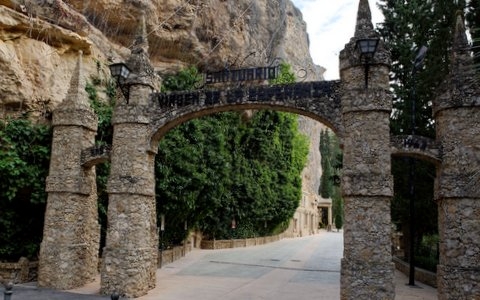
In 1617, Juana Sánchez, a widow from Mula, donated the larger image of the Virgen de la Esperanza to the sanctuary and the two have been revered together since then. This larger Virgen, known as the "Virgen Grande" is a clothed sculpture, so only the head and hands are modelled, the remainder being a fabric gown and cloak. The head is original, although the hands date from a later period and the robe has been replaced since its original presentation.
The crown of the Virgin was made by the Sevilla jeweller Fernando Marmolejo, and weighs 1.5 kilos: it is of solid gold, set with semi-precious stones.
The Virgen was named the patron of Calasparra in 1840.
Structure of the hermitage
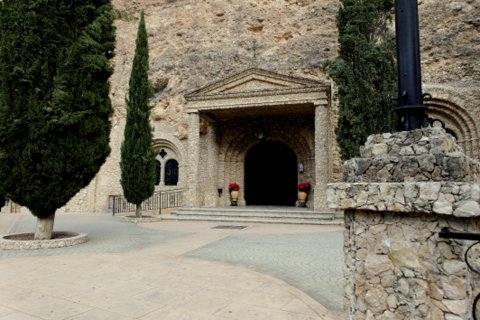
The hermitage is cut out into the rock, amplifying the original natural cave, which contains a spring of natural water.
The roof is formed by natural rock, blackened by the andle smoke of centuries, the internal walls are reinforced, and outer walls have been erected at the front with doors and windows to allow in the light. Natural stone has been used in the construction, fusing the sanctuary into the rock like a living extension of its natural surroundings, creating a naive, eclectic combination of mediaeval, baroque and classical architectural features, united by the simplicity of the design and sympathetic use of stone in the construction.
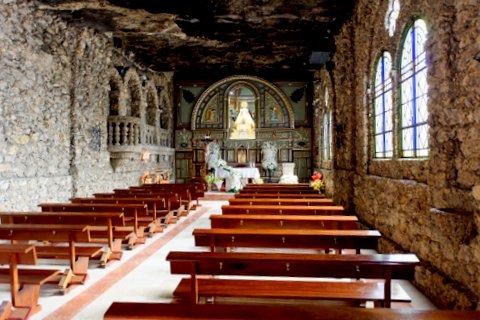
This simple fusion of stone and design extends to the external gardens, terraced levels extending down to the walkways along the riverbank and dappled shade provided by clipped walkways of trees. These lead to picnic areas used by participants in the annual Romería de la Virgen de la Esperanza, which is celebrated on 7th September each year.
Inside the sanctuary candles burn constantly, and the structure has been altered several times throughout the years, the most major changes having taken place between 1888 and 1892: much of the structure we see today dates from that period.
The main alterpiece and "camarín" which contains the Virgen are dated 1892, and the Camarín can be visited from inside the residential quarters alongside the chapel.
Visiting the Sanctuary of La Esperanza, Calasparra
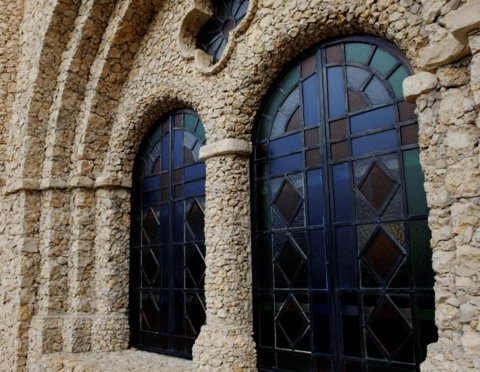
The sanctuary is 6 kilometres from the town of Calasparra and is clearly signposted.
There is ample parking for both coaches and cars and those with limited mobility can be dropped off by the main entrance, with flat access through to the chapel. There is a help point near to the entrance for those requiring assistance.
There is a substantial restaurant and cafeteria on site and picnic areas are available in the nearby picnic zone. Restaurant contact number 968 720412.
Access to the gardens is via steps, so it is difficult for those with mobility issues to enter near the sanctuary, although it is easier by the picnic areas.
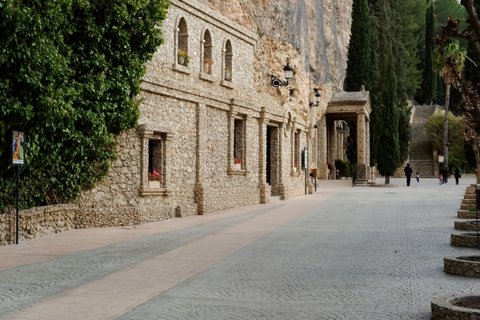
Opening Hours: 7 days a week from 9.00 until dusk.
Mass is held during the winter at 12.00 midday, and on Sundays at 13.00. During the summer Mass is at 13.00 on Sundays and religious feast days.
No entry fee is charged although donations towards the upkeep of the sanctuary are welcomed.
Please double check hours of Mass if making a special journey to attend!
Contact telephone of the sanctuary: 968 720126.
Access
Click for map, La Esperanza, Calasparra.
Calasparra is accessed from the main C415 which runs out from Murcia, linking to the north-west of the Region. Simply follow the signs for Calasparra along the C3314, turning off for La Esperanza before reaching the town.
Nearest Tourist office: Calasparra, telephone: 968 745325.
Contact Spanish News Today: Editorial 966 260 896 /
Office 968 018 268






